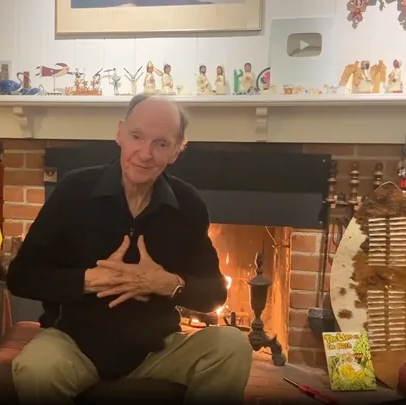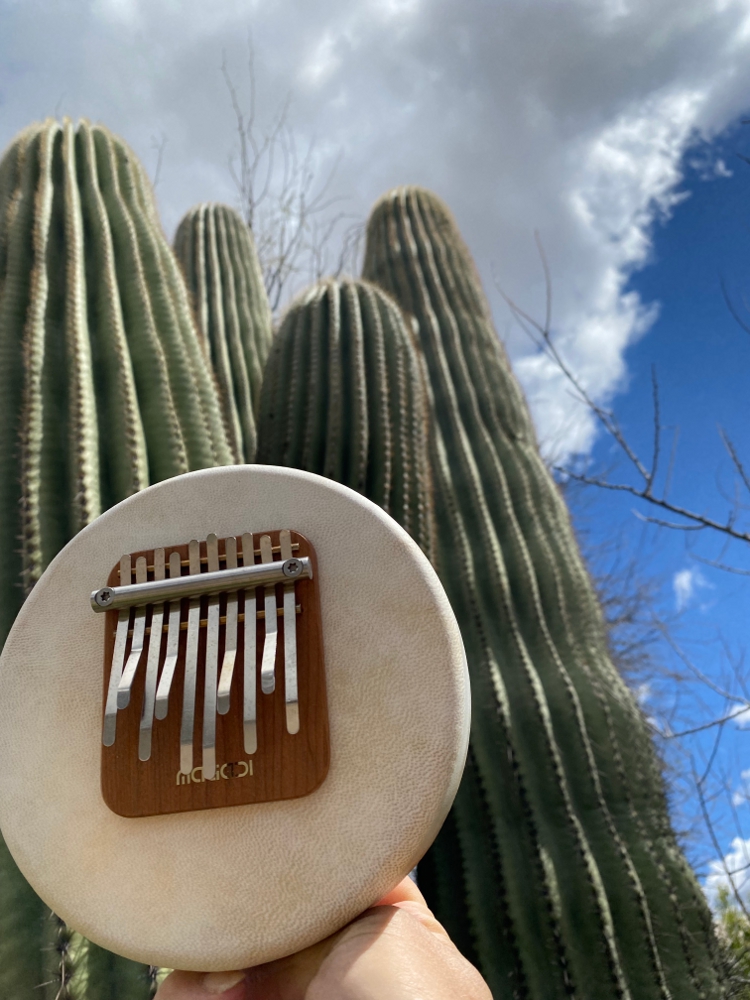
Use of this website constitutes acceptance of the Privacy Policy and User Agreement. Copyright © 2020 Kalimba Magic. All Rights Reserved.
Anna Donahoo and Bob Guido are ABNA BON. This husband-wife duo produces cool ambient music for various soundtrack projects, and their music includes live drums, guitar, bass, keyboard, violins, voice… and of course, kalimba. They have an ethereal sound all their own. Part of that sound comes from their philosophy, part of the sound comes from their recording techniques, and part just comes from the inherent nature of the kalimba.
“With the kalimba, melody and rhythm are kind of the same. You can’t think of melody on the kalimba without thinking about the rhythm. The kalimba makes you think of the two in a different way than you would with a guitar or a piano.” – Anna Donahoo.
ABNA BON creates a uniquely moving sound that blends elements of rock, ambient, world, and neoclassical. Here they talk a bit about how they use the karimba in their music. Paraphrased from their video that should be playing now:
“The human performance is definitely the heart of ABNA BON. When you choose to do art – any kind of thing that is expressive, then you really need to get to know yourself. An artist is someone who has to create music [or their other chosen artistic expression], or else they don’t feel like they are living.“
I don’t know about you, but these words so resonate with me. First, I want to create something real, with real instruments. But also, I am unhappy when I am not creating, and I tend to feel ecstasy when I successfully create music.
“The karimbas bring an exotic and global element to our music. As great idea generators, they’re inspiring to have in our toolbox. Music born from the karimba has a uniquely inextricable relationship between rhythm and melody. The beauty of this little instrument is that it demands that we work within its inherent limitations, pushing us into a different way of composing than we would with a guitar or piano. Most songwriters and composers would probably agree that being forced to think differently is a great stimulus for creativity.”
These words are so true. The general aim of western musical instruments is to provide you with unlimited notes, with unlimited possibilities. If you are Bach or Mozart, this is a great world for you. The kalimba, on the other hand, is very limited in multiple directions. But within these limitations, searching for something to do, we find we are able to find great freedom, seemingly by accident at first. I too am a multi-instrumentalist, and I find that the kalimba provides musical seeds, ideas, and inspirations that no other instrument can.
Home recording specialists, studio engineers, and anyone who wants to someday go into a studio and record their kalimba or karimba music:
“Our music often makes generous use of effects treatments where we combine echo, modulation, and reverb effects in unusual ways to extend the emotional qualities of the karimba performance and add otherworldly textures to it. We do however make sure to capture the karimba during the recording process so that it sounds especially warm and organic.
“Our signal chain for recording the karimba is the BBC (Coles 4038) ribbon microphone into an Neve preamp for a really velvety texture, and then into a Tube-Tech CL 1B for some very transparent compression. This helps to create a better balance of the various notes in the performance. We want the tonal color of each note to come through rather than just the clicky sound of the fingernails attacking the tines, which can be harsh and overwhelming. The BBC ribbon mic was used heavily by The Beatles, amongst countless other recording artists, and has a magical way of amplifying the tonal colors of an instrument while de-emphasizing harsh and overly bright frequencies. After some experimentation with mic placement, we’ve found that our favorite approach is to place the microphone close and aim it towards the wooden base, rather than at the tines, to capture a fuller range of vibrations that the karimba produces. Such a beautiful instrument deserves no less.”
How can you not love people with such respect for the kalimba’s sound?
Oh – and if you are wondering about the kalimba/karimba thing: I am using “kalimba” to mean the generic class of lamellaphone instruments. Bob and Anna use “karimba” because their precise instrument is the SaReGaMa Lotus Karimba. Why is SaReGaMa’s instrument called a “karimba” and not something else? With its two rows of tines, the Lotus tuning was created (by SaReGaMa) using the African-tuned Karimba.


Sign up for our newsletter and free resources with your email address:
We pinky promise not to spam you and to only send good stuff.
 Assist Paul Tracey Rebuild His House in Pacific Palisades
Assist Paul Tracey Rebuild His House in Pacific Palisades 8-Note Spiral Kalimba Turned into a Student Karimba
8-Note Spiral Kalimba Turned into a Student Karimba Seek to Infuse Your Musical Moments With Beauty and Magic
Seek to Infuse Your Musical Moments With Beauty and MagicUse of this website constitutes acceptance of the Privacy Policy and User Agreement. Copyright © 2020 Kalimba Magic. All Rights Reserved.